June 8, 2023 | Words by Kelsey Verboom
Travelling along a via ferrata route is one of the most unique and breathtaking ways to experience being in the mountains. If you’re not sure what a via ferrata is, start here, then read on.
CMH has four unique via ferratas to try:
- Mt. Nimbus Via Ferrata or Conrad Glacier Via Ferrata at CMH Bobbie Burns
- Zillmer Canyon Via Ferrata at CMH Cariboos
- Skyladder Via Ferrata at CMH Bugaboos
Each one varies in features, length, challenge level and views.
Whichever route you venture onto next, here are some helpful tips and tricks from Matt Dellow, an ACMG-certified Guide and the Area Manager of CMH Bobbie Burns.

Choose footwear with flex
Via ferrata routes include features like iron rungs to place your feet on, slatted suspension bridges to cross and rock ledges to shuffle along.
With footholds to navigate that you wouldn’t necessarily encounter on a regular hike, it’s best to select footwear that’s slightly different from your extra-rigid hiking boots.
Aim for a supportive, closed-toed hiking shoe or light boot that has a little more flexion than the stiffest of hiking boots. Think supportive and nimble—not too big, stiff or clunky. Avoid footwear that isn’t hiking-specific, like those floppy, five-fingered grip-toe shoes, your gym kicks or your Velcro-strapped river sandals.
“Hiking shoes are a great choice. They’re lighter, more comfortable and a bit more agile, Matt said. “Light hiking boots are great, too. Either one will let you feel the rungs of the via ferrata a little better than something like a stiff trekking boot would.”
Bonus tip: pack extra socks in your backpack. Wool or wool-blend socks that wick are best. Some of CMH’s via ferrata routes pass near waterfalls, so your feet may get wet from the overspray. It’s nice to have a fresh pair of socks to later swap out with your soggy ones.
Cover your legs
Long pants are a better choice than shorts on the via ferrata because they will protect your gams from raking along the rocky faces you’ll encounter.
“Don’t wear shorts. You will scrape your shins,” Matt said plainly. “Also, sections of the route may be in the shade, which can get surprisingly cool temperature-wise. And weather can change in a short space of time or wind might come up. Pants are a better choice for all those reasons.”
You’ll be taking some bigger, reaching steps along the way, so try to wear pants made with a material that’s flexible enough for you to bend, twist and stretch in. Leave your stiff Levis on the shelf.
It’s also advantageous to choose a material that doesn’t tear or rip easily, as you’ll likely slide your legs against rocks as you climb or pull yourself up and over different terrain. A climbing or hiking pant is better designed for withstanding that wear and tear than stretchy gym leggings, for example. A climbing or hiking pant will also typically be a quick-dry material, which is a nice feature to have if you’re sweating or if you pass near a gushing waterfall.
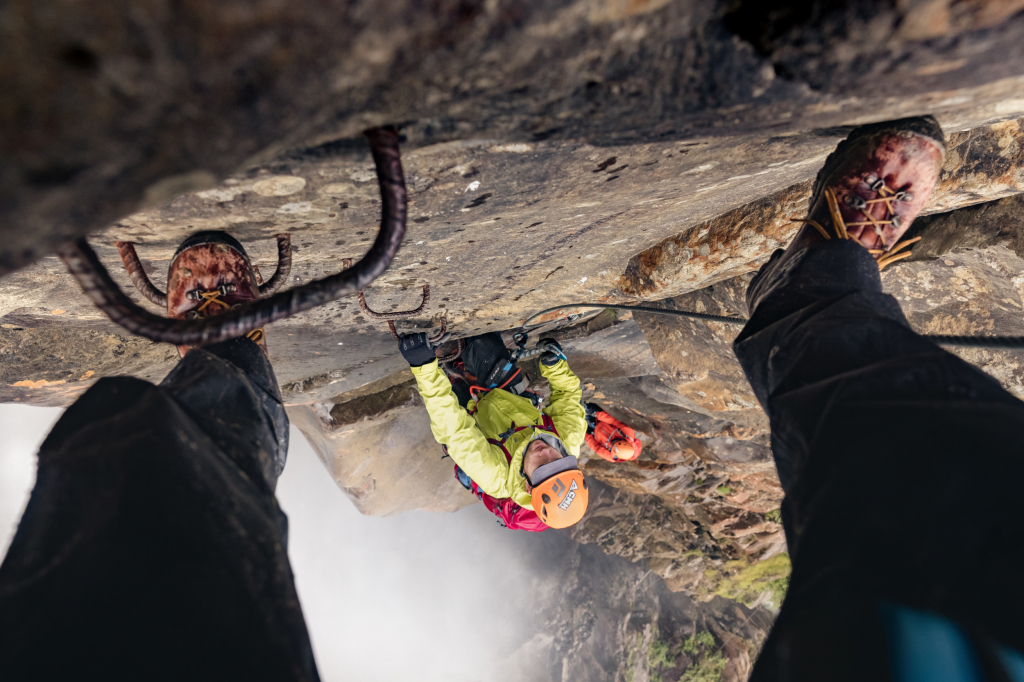
Wear gloves
Just as you want to shield your feet and legs from rock scrapes as you climb, you also want to protect your fingers by wearing gloves. Gloves in the summertime? Yes! Not the big, insulated kind; more of a thin and flexible—yet still robust—glove that will help you grip and grab ropes, rocks, rungs and bridge rails with abandon.
They must be gloves, not mitts, because you need the added dexterity to operate your harness and safety carabineers as you move through the route. You also want a full-fingered glove, not something like finglerless road cycling gloves.
“A light, leather work glove is a good choice. Or something with a bit of grip,” Matt said. “Try for something with fingers that are reinforced with rubber or leather for grip and durability. Even a good pair of garden gloves with rubberized fingers can do the job.”
The retail shop at your destination CMH lodge stocks via ferrata-specific gloves by Black Diamond for purchase, though it’s worth noting that they are popular and sometimes sell out. It’s best to pack a backup pair even if you’re planning to purchase some on your trip.
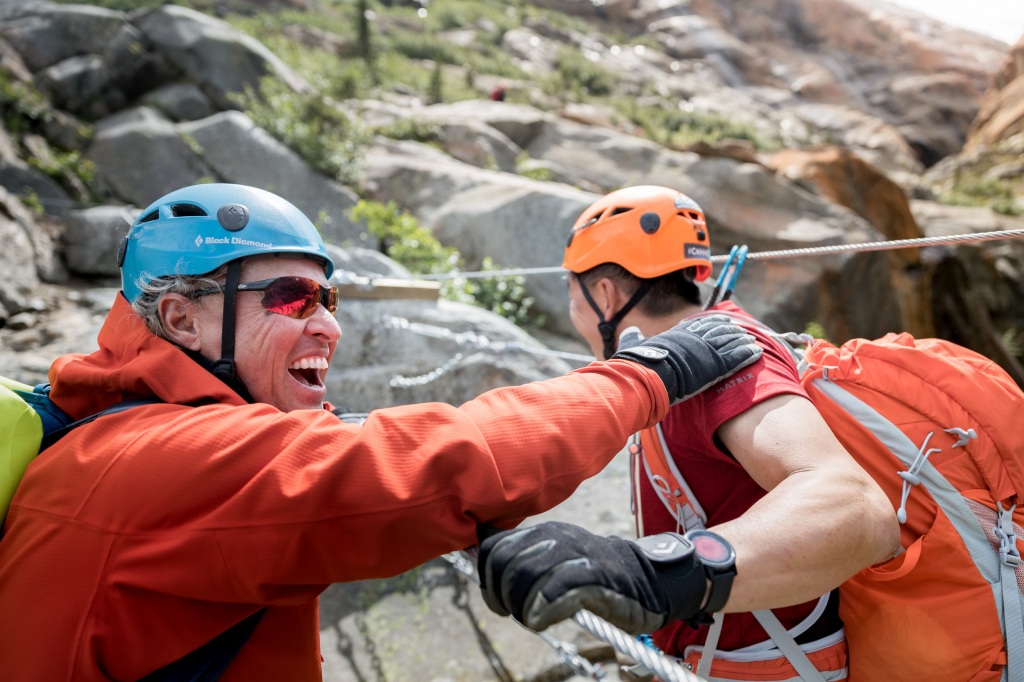
Skip the hiking poles
Although hiking poles are an excellent tool for regular hiking and heli-hiking, they aren’t helpful on the via ferrata. It’s better to ditch the poles so you have both hands available to operate your gear and navigate the route.
“For the most part, poles just get in the way,” Matt said. “Unless you have the style that breaks down really small and can be stashed in your pack, it’s better to leave them behind. Even then, I find that people who bring them in their packs don’t pull them out.”
If you have questions about this, discuss what’s best for you with your guide.
Carry your camera carefully
The via ferrata requires focus and is not somewhere you’ll be constantly snapping hundreds of pics every step of the way. But that doesn’t mean you can’t still get a handful of spectacular photos or videos from your adventure!
If capturing images is important to you, let your guide know so you can learn the ideal times to pause for pics.
Think about packing a camera that’s on the small end of the scale or using your phone’s camera. Plan to be able to tuck it away behind a zipper and not have it swinging from your body.
“I recommend a good small camera or your phone,” Matt said. “I wouldn’t bring a huge, bulky camera unless you’re a pro photographer who is there for that purpose. With a bigger camera or when carrying a camera in a chest harness, you can easily smack your camera on the rocks as you climb.”
“It’s also not the worst idea to have a leash for your phone or camera,” Matt added. Tether the end of the leash inside a pocket’s inner loop or somewhere safe on your body so when you do pull out your gear for those select photo-worthy moments, you don’t risk dropping it far below.
You can probably do it!
Gear tips aside, don’t forget the power of your mind. If you have a reasonable level of fitness and strength and if you don’t struggle with exposure/heights, the via ferrata is an incredible experience that will leave you feeling exhilarated and accomplished.
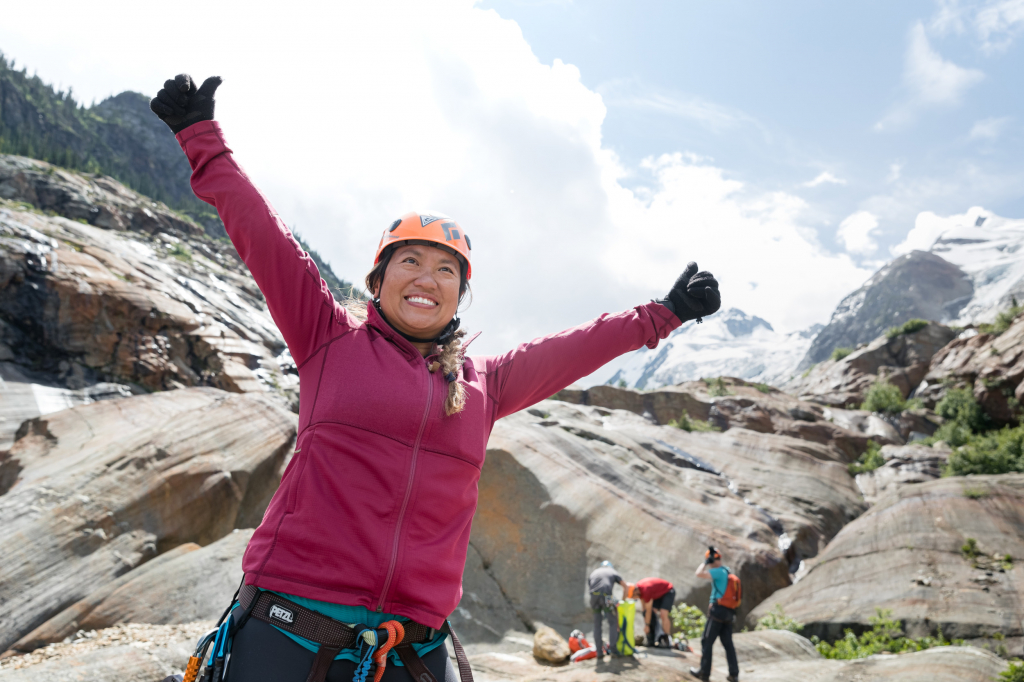
It’s normal to have a few nervous stomach butterflies before you go, but don’t necessarily let that stop you from going on the adventure of a lifetime.
“If you’re not sure if you can or should do the via ferrata, ask your guide and talk about it together,” Matt said.
“It’s not a good fit for everyone, but some people do underestimate their abilities and could definitely do it if they have the inkling. I’ve seen guests be quite worried about trying, but then if they do, they usually finish the day with the biggest grins on their faces.”
Good to know: The via ferrata is not a guaranteed activity during your CMH trip. Although we will do everything we can to get you out there, your participation is always at your guides’ discretion and is weather-dependent.

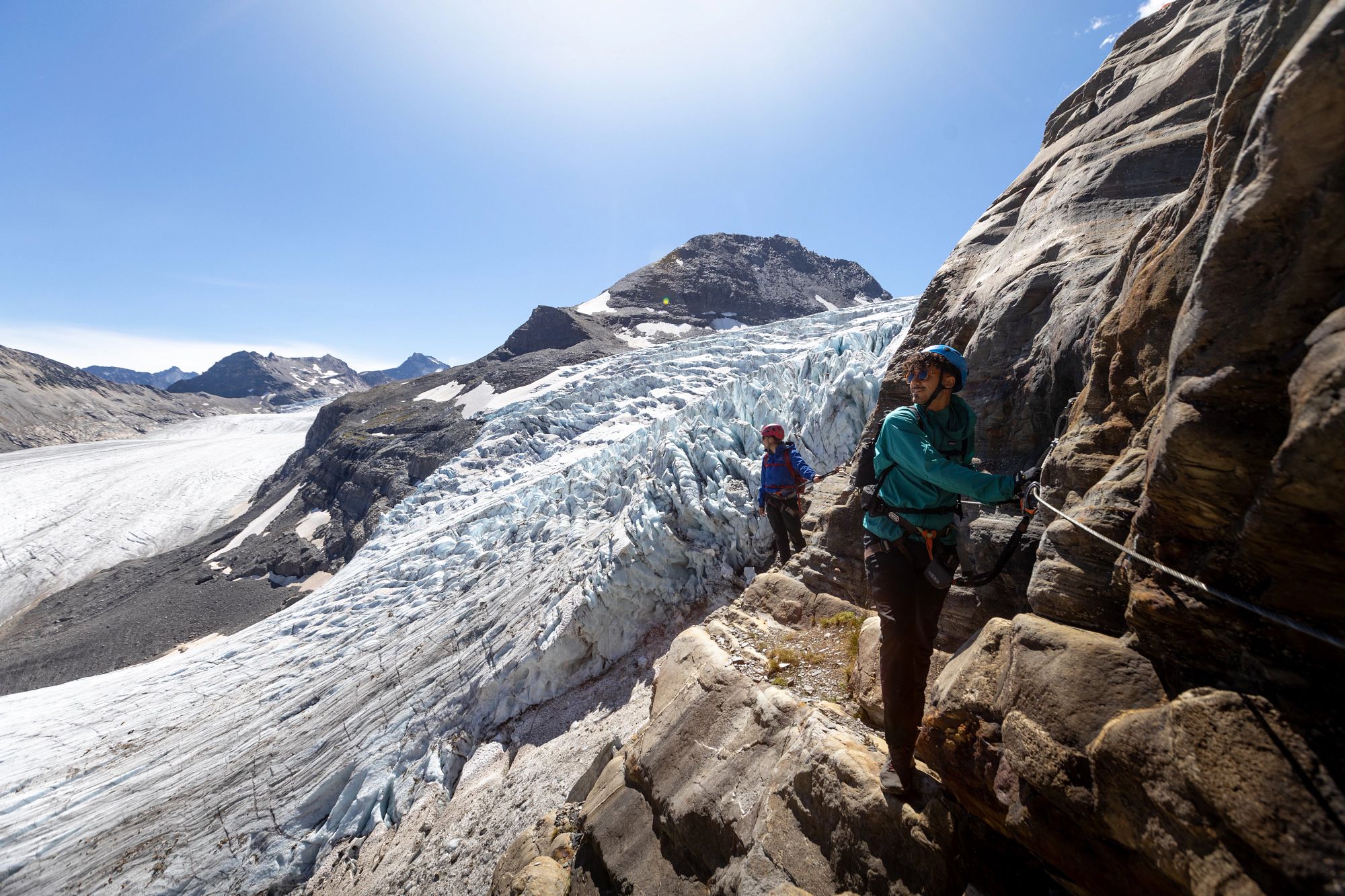
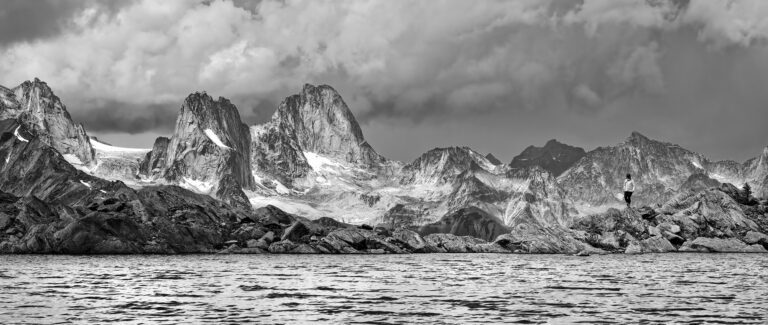
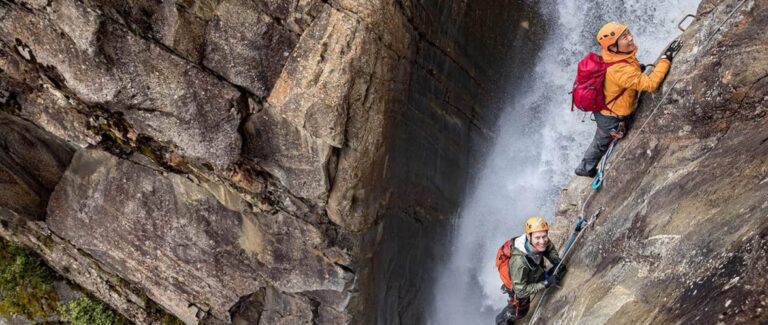

Comments